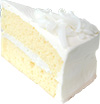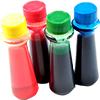Sign In Chef

By using our free meal planner (and the rest of spoonacular.com) you have to agree that you and only you are responsible for anything that happens to you because of something you have read on this site or have bought/cooked/eaten because of this site. After all, the only person who controls what you put in your mouth is you, right?
Spoonacular is a recipe search engine that sources recipes from across the web. We do our best to find recipes suitable for many diets — whether vegetarian, vegan, gluten free, dairy free, etc. — but we cannot guarantee that a recipe's ingredients are safe for your diet. Always read ingredient lists from the original source (follow the link from the "Instructions" field) in case an ingredient has been incorrectly extracted from the original source or has been labeled incorrectly in any way. Moreover, it is important that you always read the labels on every product you buy to see if the product could cause an allergic reaction or if it conflicts with your personal or religious beliefs. If you are still not sure after reading the label, contact the manufacturer.
We also attempt to estimate the cost and calculate the nutritional information for the recipes found on our site. Again, we cannot guarantee the accuracy of this information. Additionally, our nutrition visualizer that suggests that you limit sodium, sugar, etc., and get enough protein, vitamins, and minerals is not intended as medical advice. Similarly, our health tips are based on articles we have read from various sources across the web, and are not based on any medical training. The team behind spoonacular does not possess any medical qualifications and the information may be found to be incorrect or out of date based on future research. If you need help planning your diet or determining which foods (and recipes) are safe for you, contact a registered dietitian, allergist, or another medical professional.
Spoonacular is not responsible for any adverse effects or damages that occur because of your use of the website or any information it provides (e.g. after cooking/consuming a recipe on spoonacular.com or on any of the sites we link to, after reading information from articles or shared via social media, etc.)
× Image © Pink When
Image © Pink When
$0.87 per serving

1 likes

Ready in 60 minutes

Spoonacular Score: 6%
The recipe Cake Balls can be made in around 1 hour. One serving contains 410 calories, 2g of protein, and 15g of fat. This recipe serves 12 and costs 87 cents per serving. It is brought to you by Pink When. 1 person were impressed by this recipe. A mixture of classic vanilla cake, confectioners' sugar, butter, and a handful of other ingredients are all it takes to make this recipe so tasty. Only a few people really liked this dessert. Overall, this recipe earns a not so excellent spoonacular score of 11%. Try Corn Cake Bean Balls, Aka Fiesta Balls, Cake Balls (Cake Truffles), and Cake Balls for similar recipes.
Dessert works really well with Cream Sherry, Port Wine, and Moscato d'Asti. A common wine pairing rule is to make sure your wine is sweeter than your food. Delicate desserts go well with Moscato d'Asti, nutty desserts with cream sherry, and caramel or chocolate desserts pair well with port. The NV Johnson Estate Cream Sherry with a 5 out of 5 star rating seems like a good match. It costs about 19 dollars per bottle.
 Very aromatic with notes of hazelnut, vanilla, and a touch of oak followed by sweet raisins and a touch of yeast. Clean lasting finish. Good now but will reward those allow it to age"". A favorite pre-prandial beverage. Consider it with nuts before dinner as an aperitif, or after dinner with dessert, especially chocolates and fruit-based desserts. Also wonderful on cold afternoons, served with biscotti to dip in ""Italian-style"". "
Very aromatic with notes of hazelnut, vanilla, and a touch of oak followed by sweet raisins and a touch of yeast. Clean lasting finish. Good now but will reward those allow it to age"". A favorite pre-prandial beverage. Consider it with nuts before dinner as an aperitif, or after dinner with dessert, especially chocolates and fruit-based desserts. Also wonderful on cold afternoons, served with biscotti to dip in ""Italian-style"". "
» Get this wine on Amazon.com
























Read the detailed instructions on Pink When